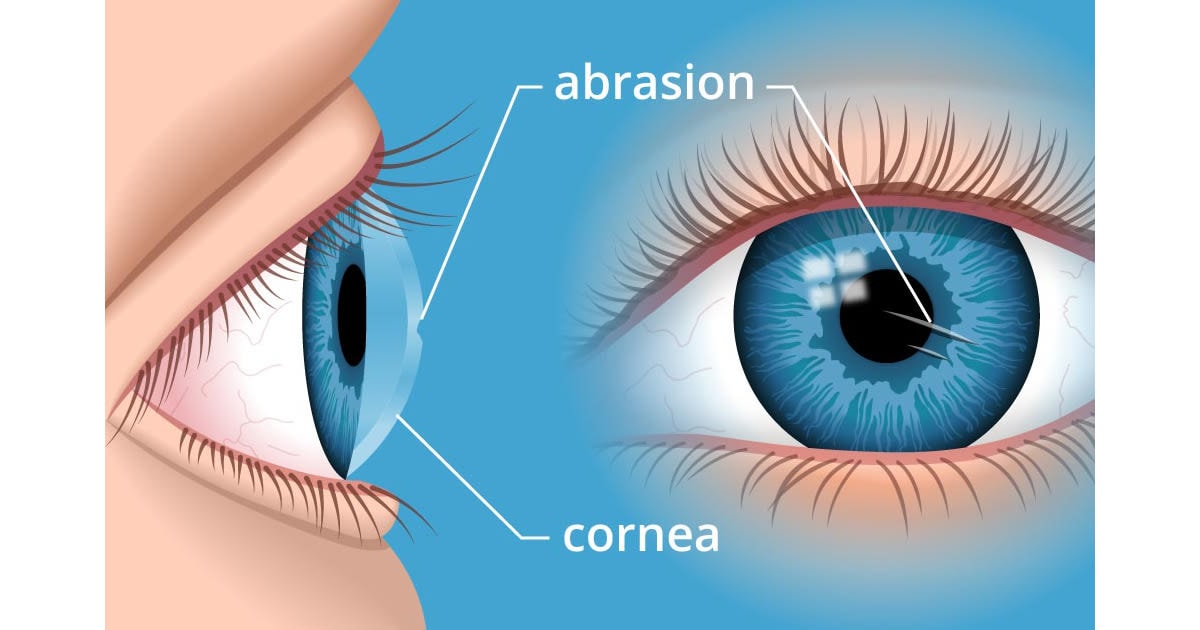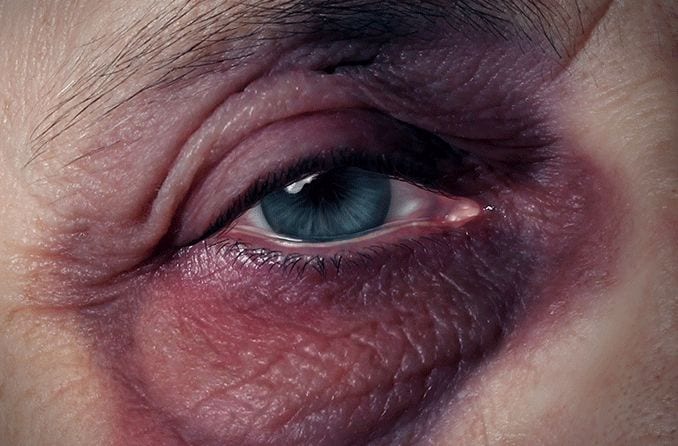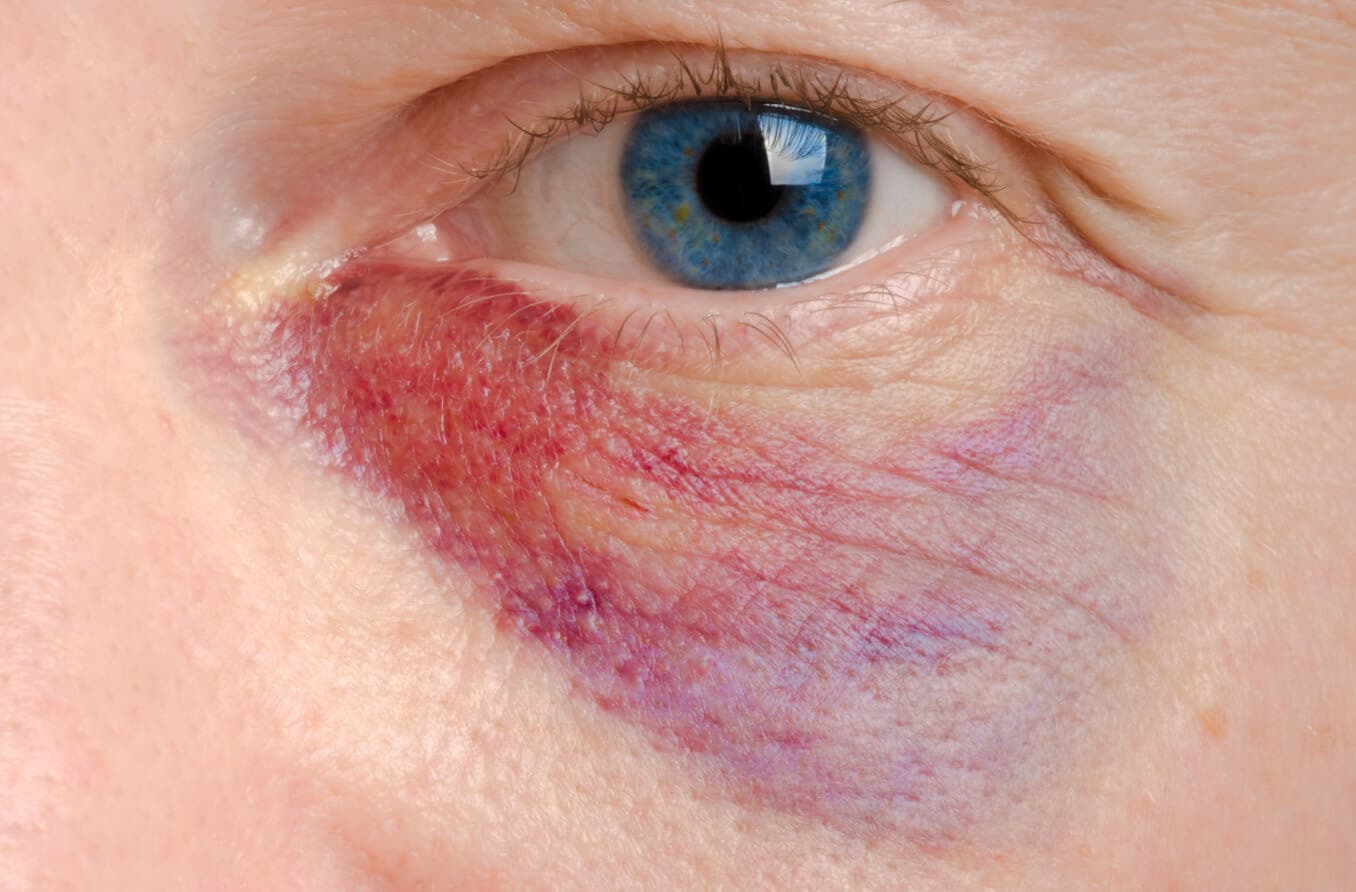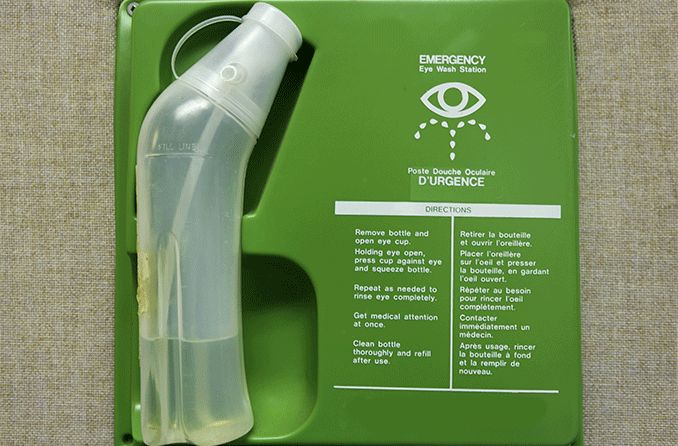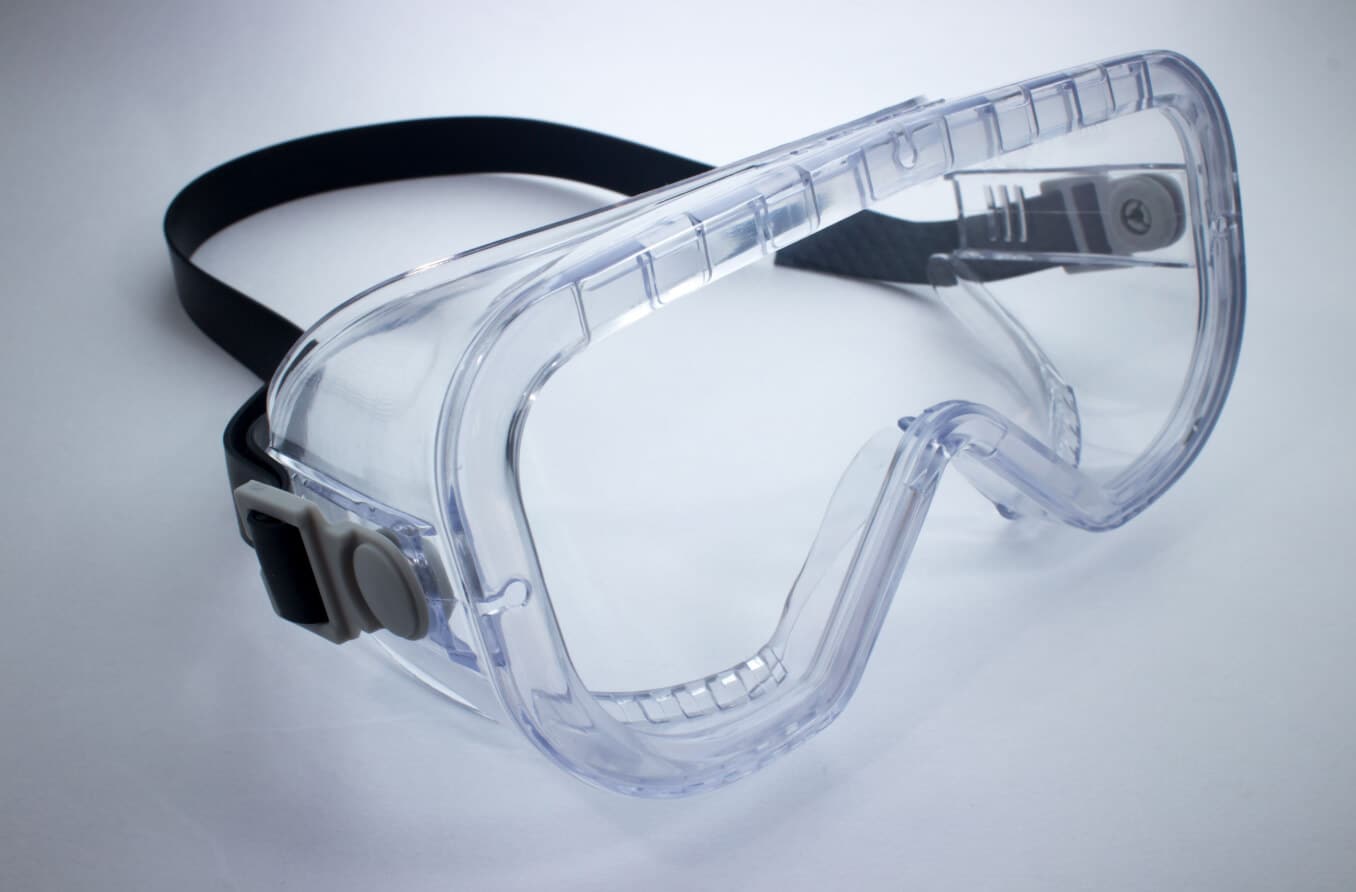Symptoms of a corneal abrasion
A scratched cornea often causes significant discomfort; watery, red eyes and hypersensitivity to light.
The cornea is one of the most sensitive parts of your body, so even a very small corneal abrasion can be extremely painful and feel much larger in size — as if you have a big, rough object in your eye.
In addition to pain and a gritty or foreign body sensation, other signs and symptoms of corneal abrasions include redness, tearing, light sensitivity, headache, blurry or decreased vision, eye twitching, a dull ache and, occasionally, nausea.
If you think you may have suffered a corneal abrasion and are experiencing any of these symptoms, see an eye doctor near you right away.
What to expect from a scratched cornea
People have a tendency to rub their eyes when they feel like something is "in" them, but this can make matters much worse. If you get something in your eye, you can attempt to flush it out with water, but don't rub your eye. Don't patch it either, since this can speed bacterial growth and increase the risk of an eye infection.

A cornea abrasion usually affects just one eye, and it can feel like something is on or in your scratched eye.
If possible, rinse your eye with a sterile saline eye wash or a multipurpose contact lens solution rather than tap water or bottled water. Microorganisms such as Acanthamoeba have been found in tap water and even bottled water, and these pathogens can cause a serious, vision-threatening infection if introduced to an eye with a scratched cornea.
After flushing the eye, if redness, pain or foreign body sensation continues, seek immediate attention because corneal abrasions can cause serious harm within hours.
To diagnose a corneal abrasion, your optometrist or ophthalmologist may apply an eye drop to numb your eye so you can keep it open for the exam. Another type of eye drop containing a temporary dye may be used to help your doctor see the extent of the abrasion. The dye can make a corneal abrasion more visible when viewing your eye with a blue light and an examining microscope called a slit lamp.
Depending on what may have caused the scratch and what your doctor sees during the exam, your eye might be gently swabbed for a culture to ensure proper treatment in the event of infection.
Corneal abrasion treatments
Treatment for a corneal abrasion depends on the severity of the wound and the cause. Minor abrasions sometimes can be treated with non-preserved lubricating drops to keep your eye moist and comfortable while your eye's natural healing process takes place.
As a precaution, even superficial abrasions sometimes are treated with antibiotic eye drops to prevent infection during healing. Superficial corneal abrasions tend to heal quickly — usually within two or three days.
Some corneal abrasions may require an antibiotic ointment that stays on the eye longer, a steroid to decrease inflammation, and something to relieve pain and light sensitivity. Large, deep corneal abrasions take longer to heal and can cause a permanent scar that might affect vision.
In some cases, scratched corneas are treated with what's known as a bandage contact lens. When used with prescription eye drops, these special lenses provide pain relief and sometimes can speed healing.
Typically, regular contact lenses should not be worn over a corneal abrasion because of increased risk of an infection developing under the lens. Your eye doctor will tell you when it's safe to resume wearing your contacts following a scratched cornea.
Depending on the treatment and severity of the injury, your eye doctor may schedule a follow-up exam as soon as 24 hours after initial treatment.
When treated right away, most corneal abrasions heal quickly with no permanent vision loss. But some deeper abrasions that occur in the center of the cornea (directly in front of the pupil) can leave a corneal scar and result in a loss of visual acuity.
If left untreated, some deep corneal abrasions may cause a corneal ulcer that can result in severe vision loss. Abrasions caused by organic matter, in particular, can increase the risk of corneal ulceration.
It's very important to follow your eye doctor's treatment recommendations and attend follow-up visits as directed. Corneal abrasions don't always heal properly and some may cause recurrent corneal erosions and other complications that can affect your vision, comfort and health.
How to prevent a scratched eye
Many corneal abrasions can be avoided by taking some simple, common-sense precautions.
For example, always wear safety glasses or protective goggles in work environments that have airborne debris, particularly in welding environments. Likewise, protective eyewear should be used when doing yard work, using power tools and playing sports, even if you wear contact lenses.
If you wear contact lenses, always follow your eye doctor's instructions regarding how long to wear them, when to discard them, and the proper contact lens care solutions to use.
If you experience a corneal abrasion that appears to be related to dry eyes, see an eye doctor and follow the dry eye treatment protocol your doctor recommends.
